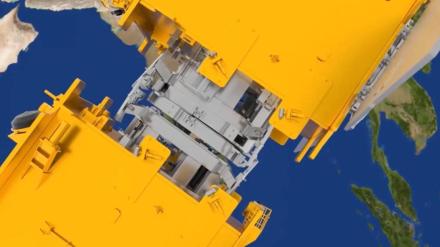The Indian Space Research Organisation (ISRO) achieved a significant milestone on Thursday by successfully completing the docking of its SpaDeX satellites, sources revealed. The docking process, which brought the satellites as close as 3 meters to each other during trials, marks a major achievement for India’s space program.
ISRO had initially scheduled the docking for January 7 and January 9, but technical issues led to delays. The satellites, launched on December 30, underwent a trial on January 12, where they were maneuvered to a distance of 15 meters and then 3 meters apart. ISRO later confirmed, “A trial attempt to reach up to 15 m and further to 3 m is done. Moving back spacecrafts to safe distance. The docking process will be done after analysing data further.”
A notable application of this docking technology is expected in Chandrayaan-4, a mission designed to retrieve lunar samples and return them to Earth. This ambitious mission will involve launching a re-entry module, specifically engineered to withstand the extreme heat of atmospheric re-entry, separately. The transfer module, carrying precious Moon samples, will dock with the re-entry module in Earth’s orbit before safely delivering the samples back to the planet.
While ISRO originally planned to make the docking a public event, the repeated postponements prompted the agency to adopt a “dock and inform” strategy.
Mahindra Group’s chairperson Anand Mahindra took to X and congratulated the space agency on the achievement.
The postponement of the SpaDex docking schedules coincided with a significant leadership transition at ISRO. On January 7, the Central government announced V. Narayanan as the new director of ISRO, with him officially assuming charge on January 14.
The SpaDex (Space Docking Exercise) mission, launched on December 30 via the PSLV, is a groundbreaking technology demonstrator aimed at showcasing India’s capability to dock two small satellites in orbit. This milestone is an essential precursor to more advanced inter-orbital maneuvers in future space missions.
